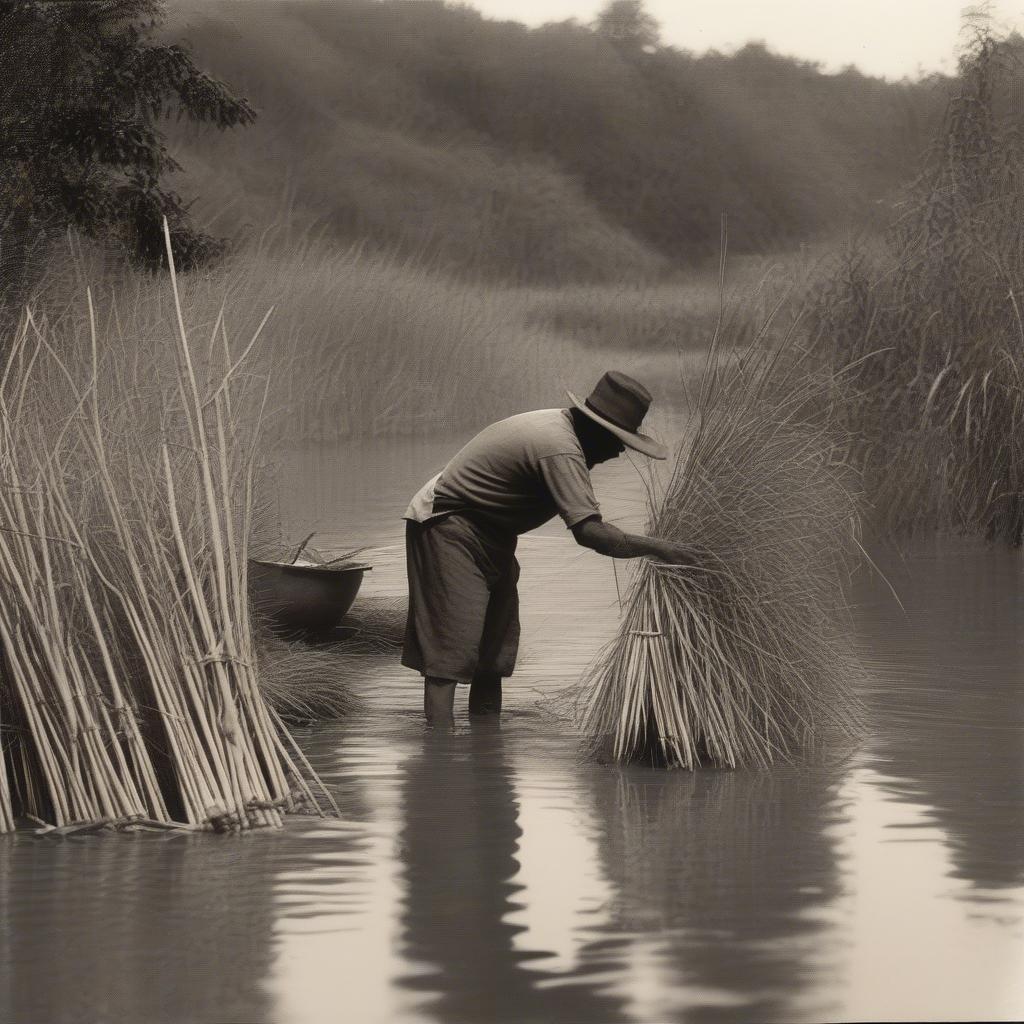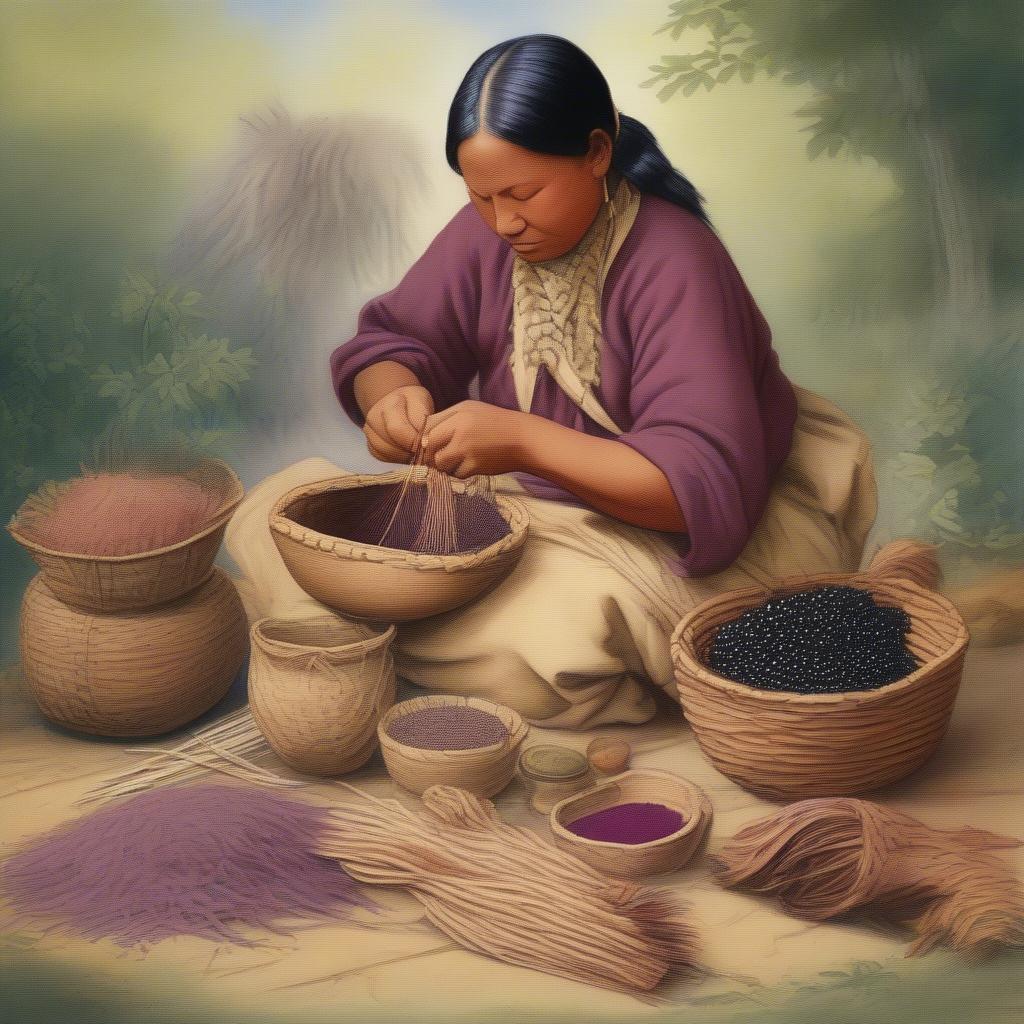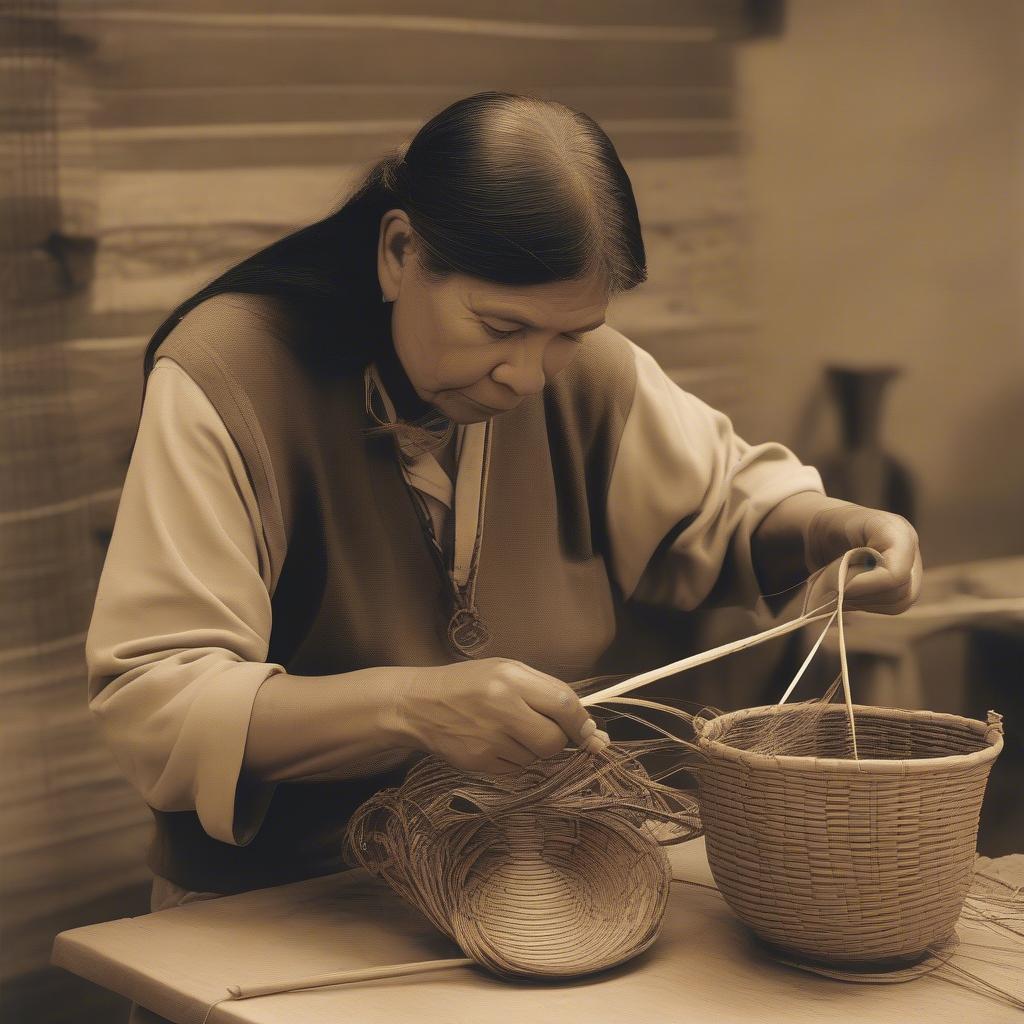Basket Weaving
Cherokee Basket Weaving History Materials
Cherokee Basket Weaving History Materials reveal a rich tradition deeply intertwined with the Cherokee people’s culture and environment. From the rivercane gathered along streams to the vibrant dyes derived from plants, each material tells a story of connection to the land and ancestral knowledge. This article explores the fascinating history of Cherokee basket weaving, delving into the specific materials used and their significance.
 Cherokee artisan harvesting rivercane for basket weaving
Cherokee artisan harvesting rivercane for basket weaving
A Legacy Woven in Time: Cherokee Basket Weaving History
Cherokee basket weaving isn’t just a craft; it’s a living testament to generations of artistry and cultural preservation. For centuries, Cherokee people have woven intricate baskets, each one a unique expression of their heritage. These baskets served practical purposes, from gathering food and storing belongings to ceremonial uses. The knowledge of weaving techniques and the selection of appropriate materials were passed down through families, ensuring the continuation of this vital tradition.
Cherokee indian basket weaving has evolved over time, reflecting both the resilience and adaptability of the Cherokee people. Early baskets were primarily utilitarian, focusing on functionality and durability. As time progressed, more elaborate designs and decorative elements emerged, showcasing the artistic skill and creativity of the weavers.
The Heart of the Craft: Cherokee Basket Weaving Materials
The materials used in Cherokee basket weaving are intrinsically linked to the natural world surrounding the Cherokee people. The most prominent material is rivercane, a strong and flexible reed that grows abundantly along riverbanks.
Rivercane: The Foundation of Cherokee Baskets
Rivercane is carefully harvested and prepared before it can be woven. This process involves splitting, cleaning, and sometimes dyeing the cane to achieve the desired color and texture. The strength and flexibility of rivercane make it ideal for creating sturdy and intricately patterned baskets.
 Preparing natural dyes for Cherokee basket weaving
Preparing natural dyes for Cherokee basket weaving
Beyond Rivercane: Exploring Other Natural Materials
While rivercane forms the backbone of most Cherokee baskets, other natural materials play a vital role. White oak, honeysuckle, and various grasses are often incorporated, adding texture and visual interest to the finished product. Basket weaving north carolina also uses similar materials.
The Art of Natural Dyes
Natural dyes, derived from plants, berries, and roots, are used to create the vibrant colors that characterize Cherokee baskets. These dyes imbue the baskets with a rich, earthy palette, reflecting the connection to the natural world. The specific plants used for dyeing hold cultural significance, adding another layer of meaning to the finished artwork. Double weave basket cheroee often showcases these vibrant natural dyes.
Preserving a Cultural Treasure
Cherokee basket weaving continues to thrive today, thanks to the dedication of contemporary Cherokee artists who are keeping the tradition alive. These artists not only create beautiful and functional baskets but also play a vital role in preserving and sharing their cultural heritage. Native american basket weaving conference ca 2019 offers a platform for these artists to connect and share their knowledge.
 Contemporary Cherokee basket weaver at work
Contemporary Cherokee basket weaver at work
Conclusion
Cherokee basket weaving history materials tell a compelling story of cultural resilience and artistic expression. From the carefully chosen rivercane to the vibrant natural dyes, each element reflects the deep connection between the Cherokee people and their environment. By understanding the history and materials behind these beautiful baskets, we gain a deeper appreciation for the artistry and cultural significance they hold. For those interested in learning this craft, you can check basket weaving class cincinnati.
FAQ
- What is the most common material used in Cherokee basket weaving? Rivercane is the primary material.
- What other materials are used besides rivercane? White oak, honeysuckle, and various grasses are also used.
- Where do Cherokee weavers get the dyes for their baskets? They use natural dyes derived from plants, berries, and roots.
- Why is Cherokee basket weaving important? It’s a vital part of Cherokee cultural heritage and artistic expression.
- Are Cherokee baskets still made today? Yes, contemporary Cherokee artists continue to create beautiful and functional baskets.
- How can I learn more about Cherokee basket weaving? Visit museums, attend workshops, or research online.
- Where can I buy authentic Cherokee baskets? Look for reputable galleries or directly from Cherokee artists.
Looking for more information on specific basket weaving techniques or the cultural significance of different basket designs? Explore our other articles on Basket Weave for a deeper dive into the world of basketry.
When you need assistance, please contact us at Hanoi, Vietnam, or Tech Avenue, Suite 12, San Francisco, CA 94105, USA. We have a 24/7 customer service team.
